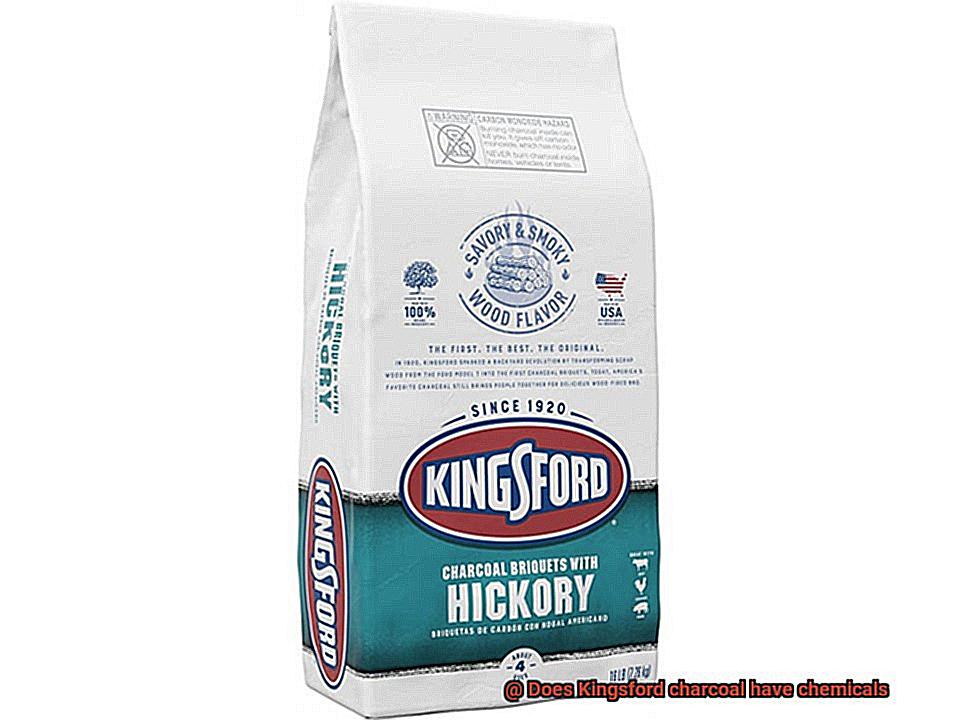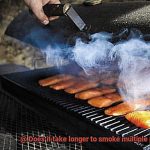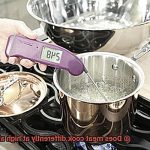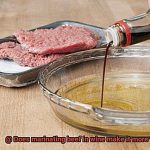In today’s health-conscious world, where we meticulously examine the ingredients in our food and beverages, it’s only natural to question our grilling techniques as well. One brand that reigns supreme at countless barbecues is none other than Kingsford charcoal. In this blog post, we aim to uncover the truth about any lurking chemicals in this popular choice.
The burning question on everyone’s minds is whether Kingsford charcoal contains chemicals. Fear not. We are about to embark on an enlightening journey that will shed light on the facts and dispel any myths surrounding this debate.
Throughout this article, we will delve into the composition of Kingsford charcoal, scrutinize its manufacturing process, and evaluate any potential chemical additives. Our goal is to empower you with knowledge so that you can make informed decisions about your grilling preferences while ensuring both taste and health are perfectly balanced.
So grab your apron, stoke those flames, and join us as we unravel the mysteries surrounding Kingsford charcoal. Get ready to have all your burning questions answered. Let’s ignite our curiosity and explore the hidden chemistry behind Kingsford charcoal together.
Contents
What is Kingsford Charcoal?
When it comes to grilling, finding the perfect charcoal can make all the difference in the world. Look no further than Kingsford Charcoal, a brand that has stood the test of time. With its rich history, high-quality ingredients, and commitment to safety, Kingsford Charcoal is the top choice for grillers worldwide. In this article, we will delve into what sets Kingsford Charcoal apart and why it is the safe and flavorful option for your next grilling adventure.
The Beginnings of Kingsford Charcoal:
Kingsford Charcoal traces its roots back to the 1920s when Henry Ford and E.G. Kingsford sought to repurpose excess wood scraps from Ford’s automobile production. This innovative solution led to the creation of a premium charcoal that quickly gained popularity among grill masters and barbecue aficionados alike.
Exceptional Ingredients for Unmatched Flavor:
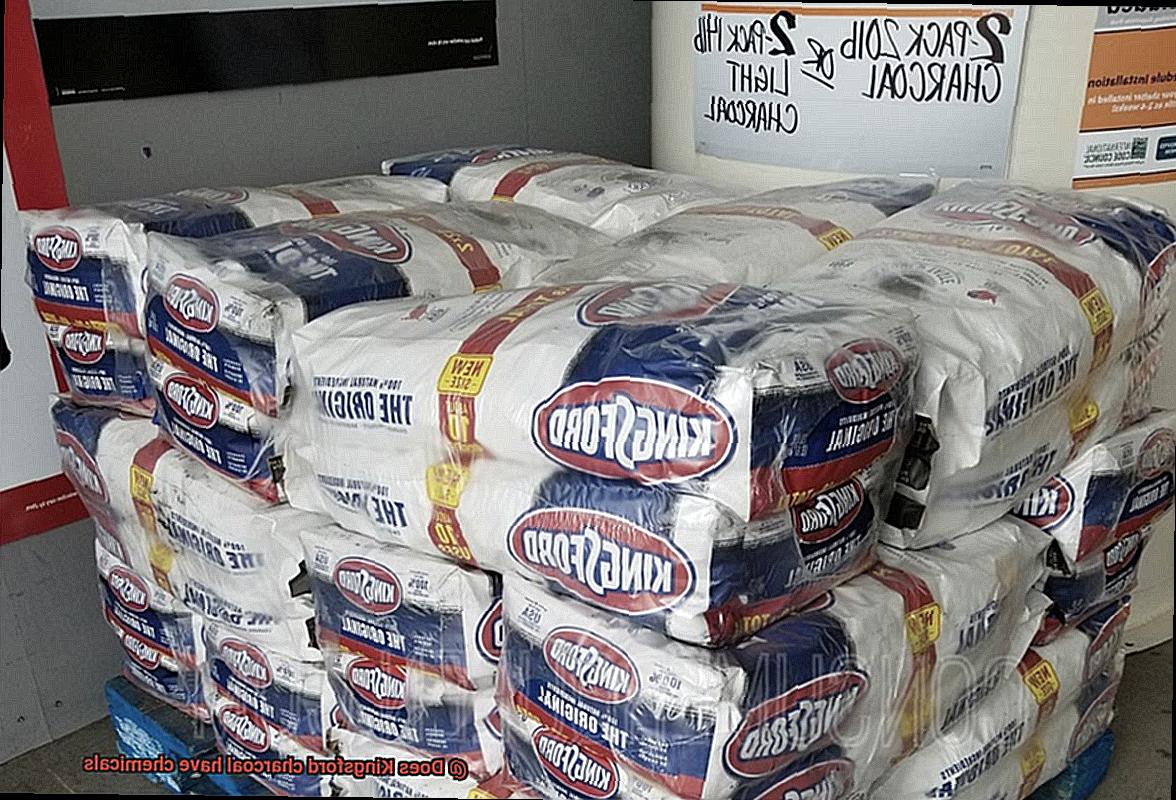
At the heart of Kingsford Charcoal lies a unique blend of charred wood sourced from renewable forests, including oak, hickory, and maple. These carefully selected woods infuse your grilled dishes with an authentic smoky taste that tantalizes the taste buds.
Enhancing Performance with Purposeful Additives:
To ensure consistent heat and ease of use, Kingsford Charcoal incorporates small amounts of additives during production. One notable additive is corn starch, acting as a binder to give the charcoal briquettes their shape and strength. Another additive is sodium nitrate, a catalyst that promotes even burning and quick ignition.
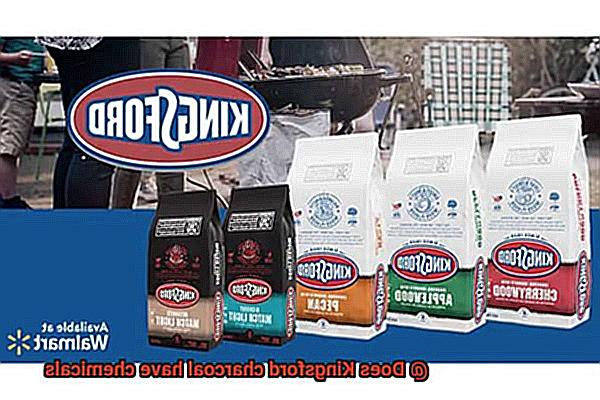
Safety Aspects Unveiled:
Safety is always a concern when it comes to food preparation. Rest assured, both corn starch and sodium nitrate used in Kingsford Charcoal are approved as safe by regulatory bodies like the FDA. When used correctly for grilling, Kingsford Charcoal poses no significant health risks.
Embracing the Combustion Process:
When you ignite your Kingsford Charcoal, it releases carbon dioxide (CO2), water vapor, and minimal amounts of other gases. These natural byproducts are harmless when utilized in a well-ventilated grilling area.
What Chemicals are in Kingsford Charcoal?
Calling all grill aficionados. Today, we embark on a journey into the enigmatic realm of Kingsford Charcoal, unraveling the secrets concealed within its composition. Prepare to be enthralled as we unveil the unique blend of chemicals that lie within those iconic briquettes, igniting your curiosity and elevating your grilling game.
Potassium Nitrate – The Maestro of Ignition:
Behold, the mastermind behind the fiery transformation of Kingsford charcoal – potassium nitrate, also known as saltpeter. This mighty chemical takes center stage, igniting and fueling your charcoal’s flames with unparalleled precision. As an oxidizing agent, it generously supplies the essential oxygen for combustion, ensuring a symphony of even and consistent burning throughout your grilling experience.
Limestone – The Trusted Sidekick:
Enter limestone, the unsung hero that binds the briquettes of Kingsford charcoal together. This humble ingredient lends its strength, holding the briquettes in their distinctive shape. But its role extends beyond mere cohesion; limestone expertly regulates the burning temperature, bestowing upon you greater control over your grilling endeavors. With an extended burning time, it empowers you to create culinary masterpieces without compromise.
Sodium Nitrate – The Speed Demon:
In the realm of Kingsford charcoal, another chemical luminary emerges – sodium nitrate. This dynamic duo, working in harmony with potassium nitrate, expedites your grilling adventures. Say farewell to tedious waiting times; sodium nitrate propels your briquettes into a blazing inferno in record time. Embrace the thrill of swift ignition and revel in sizzling results.
Minor Additives – Elevating Performance:
As we delve deeper into the intricate tapestry of Kingsford charcoal, we encounter minor additives that enhance its performance. Sawdust and starch, inconspicuous allies, lend their support, fortifying the density of the briquettes and preserving their impeccable shape during production. Fear not, for these additives remain steadfastly safe, allowing your palate to be tantalized by the flavors of your culinary creations.
Are the Additives in Kingsford Charcoal Safe?
Grilling season is in full swing, and as you prepare to unleash your culinary prowess, you may have some concerns about the safety of the additives in Kingsford charcoal. But fear not, for I am here to shed light on this smoky subject as an expert in the field.
Let’s dive deeper into the world of additives found in Kingsford charcoal. These carefully selected additions are meant to enhance the performance and convenience of the product, making your grilling experience even better. They serve multiple purposes, including improving ignition, reducing ash production, and prolonging burn time. So, what exactly are these additives?
One of the key ingredients in Kingsford charcoal is anthracite coal, a binder that ensures the briquettes hold their shape during transportation and handling. Now, you might be thinking, “Coal? Is that safe?” Rest assured, my grilling aficionados, anthracite coal is low in volatile compounds and is generally considered safe to use.
Another commonly used additive is limestone. This unassuming rock acts as a fluxing agent, maintaining a consistent burn temperature by promoting the release of carbon dioxide during combustion. But don’t worry, limestone is a safe additive commonly found in various food applications.
Now, let’s talk about sodium nitrate. This little wonder acts as an oxidizing agent, providing oxygen for the initial combustion of the charcoal and aiding in the ignition process. While large quantities of sodium nitrate may raise some health concerns, there is minimal amount present in Kingsford charcoal, posing no significant risk.
Lastly, Kingsford charcoal may contain minor amounts of fillers such as sawdust or wood scraps. These fillers are derived from natural wood sources and are added to improve burning efficiency. Rest assured, they introduce no harmful chemicals into your charcoal.
But how can we be sure that these additives are safe? Well, my cautious grillers, all additives used in Kingsford charcoal undergo rigorous testing and are approved by regulatory authorities like the FDA and EFSA. These organizations have set strict limits on the types and amounts of additives that can be used in food-related products to ensure their safety. So, you can trust that the additives in Kingsford charcoal have been given the green light.
What Gases are Released when Kingsford Charcoal is Burned?
Prepare to embark on a scientific journey as we unravel the secrets behind the mesmerizing dance of fire and discover the gases that accompany it.
The Combustion Orchestra:
As the flames engulf the Kingsford charcoal, a captivating symphony of gases fills the air, each playing its unique part in the grand composition. Let’s explore the three main performers:
Carbon Dioxide (CO2):
Like a steady bassline, carbon dioxide accompanies every burning organic material, including charcoal. It is a natural byproduct of combustion, contributing to climate change. Yet, with responsible grilling practices, we can still enjoy our barbecues while being mindful of our environmental impact.
Carbon Monoxide (CO):
Enter carbon monoxide, a silent but potentially deadly gas. This colorless and odorless performer demands our attention. Inhaling high concentrations of carbon monoxide can have severe consequences. Thus, it is crucial to ensure proper ventilation when grilling with charcoal or using it indoors. Safety takes center stage.
Volatile Organic Compounds (VOCs):
Now let’s dive into the vibrant world of volatile organic compounds, adding depth and complexity to our fiery ensemble. These compounds are diverse and volatile, evaporating at room temperature. Within Kingsford charcoal burns a mixture of VOCs, including benzene, formaldehyde, and acrolein.
Benzene – The Intruder:
In this chemical orchestra, benzene makes an unwelcome appearance. This known carcinogen has been associated with leukemia and other cancers when exposed to for extended periods. However, fear not. The concentration of benzene released during charcoal burning is generally low, allowing you to savor your grill without unnecessary concern.
Formaldehyde – The Irritant:
As the flames dance, formaldehyde takes the stage. This colorless gas with an unmistakable odor has a talent for irritating our senses. It can cause discomfort to our eyes, nose, and throat. Prolonged exposure to formaldehyde may lead to respiratory issues and increase the risk of certain cancers. But don’t fret. With moderation and proper ventilation, you can keep its impact at bay.
Is the Majority of Kingsford Charcoal Made from Wood?
Prepare to fuel your curiosity as we delve into the mesmerizing world of charcoal production.
Unveiling the Charcoal-Making Process:
Let’s ignite the flame of knowledge by unraveling the captivating process that brings Kingsford charcoal to life. Picture this: wood dancing in a fiery embrace, devoid of oxygen – a spellbinding performance known as pyrolysis.
Amidst the crackling inferno, volatile compounds ascend into thin air, leaving behind a residue of carbon-rich char. This transformative char is then skillfully crushed and molded into briquettes or lump charcoal – the ultimate combustion catalysts for our grills.
The Wood Behind the Blaze:
Now, let us shed light on the enigmatic wood that fuels Kingsford charcoal’s fiery prowess. It is widely believed that this beloved brand predominantly employs hardwoods such as oak, hickory, and maple.
And why do they favor hardwoods, you ask? These magnificent specimens deliver not only a consistent burn but also an exquisite infusion of flavors to elevate your grilled delicacies. However, there’s an intriguing twist – not all of the wood used in Kingsford charcoal production hails from pristine forests.
Sustainability Takes Center Stage:
In an era where environmental stewardship reigns supreme, examining the specific sources and sustainable practices employed by Kingsford becomes paramount.
This charismatic brand acknowledges its responsibility and procures wood from diverse suppliers, including sawmills, furniture manufacturers, and industries that generate wood waste.
In essence, some of the wood fueling Kingsford charcoal’s blazing glory may originate from reclaimed or recycled sources – a testament to their ingenious resourcefulness.
How Does Corn Starch Help with Burning Properties?
Prepare to embark on an extraordinary journey into the world of charcoal briquettes, where a seemingly ordinary ingredient takes center stage – corn starch. In this captivating exploration, we will unravel the secrets behind how corn starch enhances the burning properties of your grilling companion. Get ready to ignite your curiosity and revolutionize your grilling game.
The Binding Marvel:
Imagine the satisfaction of a perfectly formed charcoal briquette that withstands the test of time. Enter corn starch, the unsung hero behind structural integrity. Acting as a binder, when mixed with water, it transforms into a sticky paste that unifies all the ingredients – from charcoal powder to sawdust or coal dust – into a solid and resilient briquette. Bid farewell to crumbled dreams and broken promises.
Ignition Innovation:
Starting a fire with charcoal briquettes can be a daunting task, but fear not. Corn starch brings forth its pyrolysis prowess. When heated, it undergoes a remarkable transformation, breaking down into simpler compounds and releasing flammable gases that ignite with ease. Thanks to corn starch’s pyrotechnic wizardry, you’ll be grilling like a pro in no time.
Sustained Heat for Grill Mastery:
The secret to achieving grilling perfection lies in maintaining a steady and controlled burn. And who better to assist you than corn starch? As the briquette burns, the remaining corn starch continues to release those magnificent flammable gases, ensuring a consistent and reliable heat output. No more fluctuating temperatures – just precise and predictable grilling results.
Smoke Showdown:
We all crave the tantalizing aroma of food on the grill, but excessive smoke can be an unwelcome guest. Fear not. Corn starch emerges as our smoke-reducing superhero. By promoting complete combustion, it minimizes the formation of unburned particles and reduces smoke production. Bid farewell to unwanted smoke and embrace a cleaner and more enjoyable grilling experience.
Environmental Stewardship:
In this era of environmental consciousness, selecting charcoal options that align with our values is of paramount importance. Corn starch not only enhances your grilling experience but also champions sustainability. By improving combustion efficiency, corn starch reduces the carbon footprint associated with grilling, allowing you to savor mouthwatering grilled creations while knowing you’re making a positive impact on the planet.
How Does Sodium Nitrate Act as a Catalyst during Combustion?
In our previous exploration, we uncovered the hidden talents of corn starch in Kingsford charcoal. Today, our focus shifts to another unsung hero of the grill – sodium nitrate. Prepare to be amazed as we unravel the secrets of how this tiny chemical powerhouse acts as a catalyst during combustion. Get ready to ignite your curiosity and let’s dive into the fiery depths of the grill.
Turbocharging the Burn: Sodium Nitrate as a Catalyst
Picture this – sodium nitrate is the secret ingredient that takes your grilling game to new heights. As a catalyst, it works its magic by accelerating the rate of chemical reactions during burning. Think of it as injecting a Nitro Boost into your charcoal, propelling it to grilling greatness.
Oxygen on Demand: The Role of Sodium Nitrate
When sodium nitrate heats up on the grill, it undergoes decomposition and releases a crucial player – oxygen gas. This oxygen eagerly combines with the carbon in your charcoal, igniting a combustion reaction that unleashes intense heat. It’s like witnessing an exhilarating dance-off between oxygen and carbon, creating a symphony of sizzling flavors.
The Equation Unveiled: Breaking Down Sodium Nitrate’s Decomposition
Let’s delve into some captivating chemistry. The decomposition of sodium nitrate can be represented by this equation: 2 NaNO3 → 2 NaNO2 + OAs sodium nitrate breaks down, it transforms into sodium nitrite while simultaneously releasing oxygen gas. This oxygen gas then joins forces with carbon, giving rise to carbon dioxide and an abundance of scorching heat energy. It’s as if a thrilling chemistry party is unfolding right in your grill.
Mastering Temperature: Sodium Nitrate’s Regulating Prowess
But the wonders of sodium nitrate don’t end there. It boasts another extraordinary talent – regulating temperature with finesse. By gradually releasing oxygen during combustion, it ensures a controlled and even burn. No more abrupt flare-ups or pesky temperature fluctuations interfering with your grilling prowess. With sodium nitrate as your ally, you become the maestro of the grill, orchestrating flavors with precision.
2Pq6cz63axE” >
Conclusion
To sum it up, yes, Kingsford charcoal does contain chemicals. But fret not. These chemicals are carefully chosen and given the green light for safe usage. The additives found in Kingsford charcoal, like corn starch and sodium nitrate, have specific roles that amp up its performance and convenience. Rest assured, these additives go through rigorous testing and receive the stamp of approval from regulatory authorities such as the FDA and EFSA.
When you ignite Kingsford charcoal, it releases gases like carbon dioxide (CO2), carbon monoxide (CO), and volatile organic compounds (VOCs). While CO2 is a natural byproduct of burning things, high concentrations of CO can be harmful if inhaled. As for VOCs, they do exist but at low levels that pose minimal risk when you grill with proper ventilation. Think of them as tiny flavor enhancers rather than something to be alarmed about.
The majority of Kingsford charcoal is made from a delightful blend of hardwoods like oak, hickory, and maple. Not only do these woods ensure a consistent burn, but they also infuse your grilled masterpieces with mouthwatering flavors. Plus, Kingsford takes sustainability seriously by sourcing wood from various suppliers – including reclaimed or recycled sources – to keep our planet happy.
Corn starch plays a vital role in Kingsford charcoal’s burning prowess. It acts as a trusty binder that keeps everything together while aiding in easy ignition. And let’s not forget about sodium nitrate. This little powerhouse acts as a catalyst during combustion, speeding up chemical reactions and providing oxygen for a controlled burn.
So, here’s the bottom line: when you follow proper grilling practices and use Kingsford charcoal responsibly, you can enjoy your backyard barbecues without worry. It adds incredible flavor to your food while ensuring safety is never compromised.

